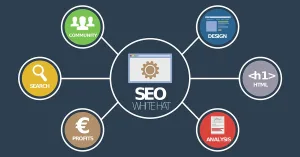Whether they are individuals or organizations, private lenders occupy a unique position in the modern financial landscape. Without affiliation with major financial institutions, they can be a lifeline for those whose loan applications have been rejected by banks.
However, private lenders operate in a far less regulated environment. While this means greater flexibility in the types of loans offered and faster approval processes, it also means private lenders face major risks and uncertainties. A lack of strong risk management and due diligence has seen many private lenders fail.
Despite this, the private lending industry has seen significant growth in recent decades, thanks to increasing demand for alternative financing solutions. As bad credit scores, rising mortgage rates, and a lack of personal and business loans have seen banks lose customers, private lenders have been there to fill the gaps.
In this article, we'll explore how this growth has affected the private lending landscape, examine the benefits and challenges of operating as a private lender in 2024, and gain an overview of the industry that will set you up with everything you need to get started in the business.
Private Lending: A Statistical Overview
First, let's take a look at the big picture, and examine the current state of the private lending industry through statistics and insights gathered by the US Federal Reserve.
Industry Growth
As mentioned in the introduction, the private lending industry is growing. Since 2000, the amount of capital available to borrowers from private lenders has grown from less than a billion dollars to over 1.7 trillion dollars.
However, this growth has caused some concerns, such as the amount of 'dry powder,' meaning capital available for private loans but not yet borrowed, growing faster than the demand for private loans. This could mean that new lenders will face increased competition and lower returns.
Investment Sources
Speaking of dry powder, if investment in private lending funds is larger than the demand for loans, who is providing this capital?
Well, the most prominent contributors are pension funds, which account for 31%, or 307 billion dollars, of the capital currently held or loaned by private lenders. Family offices, high-net-worth individuals, and other private funds also contribute 23% or 228 billion dollars. The third-largest contributors are insurance companies, investing around 9%, or 92 billion dollars, into private lending.
Since many borrowers are willing to pay higher interest rates to gain a private loan, this means higher returns for investors. The Federal Reserve posits that this, along with portfolio diversification, is the main reason investors are so willing to allocate funds to private lenders. This is good news for new lenders who, besides their startup capital, won't have to look far to find willing investors.
Types of Private Loan
Around 50% (800 billion dollars) of the 1.7 trillion dollars of capital currently held or loaned by private lenders is invested in direct lending. In 2023, the average direct loan from a private lender amounted to just under 80 million dollars.
While this is undoubtedly a high amount, private lenders' most common borrowers are "middle-market firms with annual revenues between $10 million and $1 billion," necessitating larger loans.
In addition, term loans are the most popular, accounting for 67.9% of all private loans in 2023. For those looking to get set up in private lending, this strong demand from borrowers for structured repayment terms and schedules presents an easy way to tailor loans and rise above the initial competition. It's also likely to lead to a stable revenue stream for lenders and investors.
Current Challenges and Opportunities in the Private Lending Industry
Next, let's examine the challenges private lenders have faced in recent years, and how they're seeking to overcome potential industry-wide issues by seizing opportunities.
Challenge: Rate Fluctuations - While interest rates on private loans were relatively stable in the previous decade, they have seen significant fluctuations in the last 12 months. This has led to borrowers struggling to pay and even defaulting on long-term loans, which, of course, means increased losses for lenders.
Opportunity: Flexible Rates - To mitigate the effect of high interest rates on borrowers, private lenders can offer adjustable-rate loans or structured financing options tailored to changing market conditions. For example, hybrid loan structures combining fixed and variable rates can provide borrowers and lenders with stability by allowing for adjustments based on current trends. Thus, private lenders make profits and can compete with other funds.
Challenge: Legacy Loans - Due to volatile rates and other factors, established lenders who offered loans during times of stability are increasingly seeing their borrowers unable to pay. It's clear that many private lenders did not account for potential market fluctuations or accurately assess borrowers' creditworthiness when they agreed on these loans.
Opportunity: Borrower Lender Partnerships - As loans reach maturity, lenders can work with borrowers to reassess and adjust existing loan terms, tailoring them to current financial conditions. While mitigating losses, this approach can strengthen lenders' relationships with borrowers, reinforcing their reputation for flexibility. Additionally, new lenders can learn from this experience by creating refined due diligence, risk assessment, and underwriting processes.
Challenge: Supply and Demand - As mentioned above, the private lending industry has seen significant investment in recent years. However, with a relative lack of borrowers, this capital has remained 'dry powder,' forcing lenders into a competitive market and even prompting some to agree to larger loans without adequately assessing risk.
Opportunity: Diversification - In response to this disparity and competition, many private lenders have already begun to diversify, allowing borrowers to use collateral assets, as well as purchasing CDOs. According to Private Debt Investor, "These trends are expected to continue…Nimble and innovative direct lenders will be the most competitive and best positioned to take advantage of new opportunities."
Despite the challenges that the private lending industry faces due to its rapid growth, Rocky Butani, CEO of PrivateLenderLink.com, has stated that the overwhelming feeling among lenders is still one of optimism. In a LinkedIn post, Butani said, "Many lenders feel there are lots of opportunities to grow in 2024," and highlighted that many new lenders, especially those offering small loans in regional markets, are ready to expand.
This is to say that, though the private lending industry is treading relatively unknown waters, with careful planning and a willingness to seize opportunities, becoming a private lender is still a highly viable and relatively profitable option.
Future Trends in Private Lending
Finally, let's examine some predictions for the future of private lending. Many of these advancements, improvements, and changes stem from the challenges discussed in the previous section. However, they're likely to have a significant impact not only in the recovery period but also as private lending deals with all-new challenges and opportunities throughout the next decade.
- Technology Integration - Like many other industries, private lending will be widely impacted by AI automation software and machine learning options. Allvue is just one of many such technological partners for private lenders, providing automated loan agents and AI-enabled data collection that assists in making sound lending decisions. With this technology, private lenders can focus on critical risk management tasks, ultimately scaling their businesses faster.
- Alternative Risk Assessment - Regarding predictive analytics and risk management, lenders will likely find themselves seeking new ways to assess borrower creditworthiness beyond credit scores. This is especially true considering recent rate fluctuations and larger borrowers' constantly shifting credit scores. These alternative ways of determining risk may base findings on cash flow patterns, borrowers' digital footprints, and even psychometric data.
- Stricter Standards - Due to the industry's current challenges, such as higher numbers of defaults from larger borrowers and the need for future-proof loans, the future of private lending will likely involve increased regulation. This may include minimum capital requirements to ensure private lenders can cope with losses, stricter underwriting standards and documentation requirements, and increased scrutiny in markets like real estate that have historically been exposed to elevated risk.
As mentioned, these changes are not simply a response to the current state of private lending. They're laying the groundwork for an industry better equipped to deal with future economic fluctuations and changes in borrower behavior.
In Conclusion…
The private lending industry is currently in an interesting place. Rapid expansion in the last two decades and increasing volatility in the economic sphere have brought some never-before-seen challenges. While investment in private lending is high, the number of loans issued has decreased, leaving lenders with excess capital and increased competition to draw borrowers.
However, these challenges have also brought opportunities, and many private lenders have seized the chance to showcase their resiliency. Hybrid loans, improved borrower-lender relationships, and diverse portfolios are all positives to come out of perhaps the most uncertain period in modern private lending.
And the changes are set to continue. With technological advancements poised to revolutionise the ways private lenders connect with borrowers and scale their businesses, as well as stricter standards protecting both lenders and borrowers from fluctuations, the industry is feeling tentative excitement about ongoing evolution.
For those looking to get set up in the private lending sphere, the previous few years contain many valuable lessons for overcoming issues and remaining profitable even in times of uncertainty. Though competition is high, opportunities exist to set your private lending business apart and take advantage of niche markets and reliable borrowers.
Sources and Resources
- https://aaplonline.com/articles/market-trends/the-current-state-of-the-private-lending-industry/
- https://www.federalreserve.gov/econres/notes/feds-notes/private-credit-characteristics-and-risks-20240223.html
- https://www.blackrock.com/institutions/en-us/insights/the-growth-of-direct-lending
- https://www.investec.com/en_gb/focus/investing/part-1-navigating-two-worlds-challenges-and-opportunities-in-private-debt.html
- https://www.linkedin.com/pulse/private-lending-industry-update-2023-q4-rocky-butani-1oezc/
- https://www.privatedebtinvestor.com/direct-lending-the-biggest-challenges-being-faced-today/
- https://viewpoints.reedsmith.com/post/102igpa/private-credit-current-trends-challenges
- https://www.kkr.com/insights/whats-next-for-private-lending
- https://www.allvuesystems.com/resources/the-strategic-adoption-of-ai-in-private-equity/
- https://www.spglobal.com/marketintelligence/en/news-insights/blog/navigating-private-credit-payment-in-kind-and-credit-risk-under-macro-economic-and-climate-related-scenarios





















Add comment